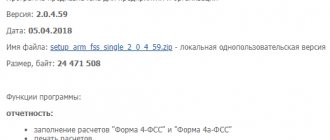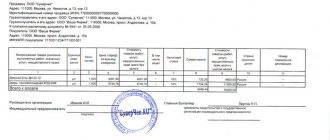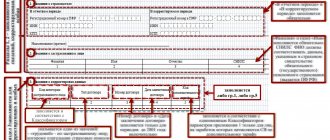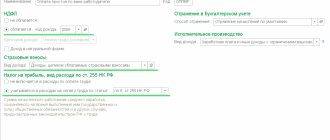Hello, dear readers of our blog!
Judicial debt in enforcement proceedings is a problem for any person. And not only from the point of view of the law, but also from the point of view of the psychological and emotional state. In the article “How to find out debt from bailiffs?” ways to find your debt and data from enforcement proceedings were discussed. What options are there for leaving the list of debtors, and is it possible to repay debts in parts?
Payment Methods
Until recently, payments to the country's budget were mainly accepted by banking organizations. Fines, fees and court debts had to be paid at a Sberbank branch, after standing in an hour-long queue. With the development of information technology, many other fast and convenient debt payment services have appeared.
This you need to know: How to legally avoid paying bailiffs
Through government services
The interdepartmental portal of the State Service provides the opportunity to obtain information about the existence of enforcement proceedings from the FSSP database and, if there is a debt, pay it here. For the convenience of users, the site provides the ability to use a variety of electronic payments. You can pay your court debt:
- Bank card of Russian and international payment systems (Visa, MasterCard, Maestro, Mir).
- Through the Google Pay service.
- From a mobile phone account.
- From an electronic wallet (Qiwi, WebMoney, Yandex.Money, ELPLAT).
Hotline for citizen consultations: 8-804-333-70-30
Via an online payment platform
One of the reliable portals for paying budget payments is the “Payment for Government Services” platform. The service allows you to repay debt to the FSSP in two modes:
- Payment by notice. If the user has already received a resolution to initiate enforcement proceedings, he can make a payment by indicating the individual entrepreneur number, amount, full name and address of the payer.
- Debt search and subsequent payment. You can check debts by full name or document number (passport, SNILS or INN). The service makes a request in the FSSP database and generates payment details.
The portal interacts with the State Information System on State and Municipal Payments (GIS, GMP), so information about completed transactions is promptly sent to the Bailiff Service. The commission for making a payment from a card is 2.2%. When paying from a mobile phone account, the commission is set by the telecom operator.
How to inform bailiffs about paying a fine
The debt will be removed from the bank on the FSSP website a few days after it is paid. If this does not happen, send an application to close the individual entrepreneur to the bailiff, attaching a receipt for payment.
Notification can be sent to:
- By registered mail.
- Using the FSSP website (the service is available in the “Appeals” / “Internet reception” section).
- By visiting the bailiff in person.
Methods without commission
Attitudes towards deducting a commission for payment can be different:
- For some, the size of the commission is not important. For example, the debtor wants to pay a small fine to the traffic police if it has already been handed over to the bailiffs. The amount of the commission in this case will be a couple of tens of rubles, and the payer will most likely choose the most convenient and fastest payment method.
- Someone is looking for the opportunity to pay off a debt to the FSSP without a commission. If a large debt needs to be paid, and the debtor is already in a difficult financial situation, he will probably try to avoid additional expenses.
At the moment, debtors have only three interest-free ways to transfer money to the FSSP deposit account.
ELPLAT
The electronic wallet “ELPLAT” was created specifically for paying any budget payments via the Internet: taxes, court debts, contributions to the Pension Fund. This service allows you to pay your debt to the FSSP without commission. However, replenishing this wallet for an individual is always paid: from 1.5% to 5%, depending on the type of account verification.
Personal account "Yandex.Money"
To pay a debt to bailiffs without commission on the Yandex.Money portal, you need to follow the algorithm:
- Go to the “Payment for services” tab.
- Select the “Taxes” section.
- In the “What we use” column, select “Receipt”.
Drawing up payment orders to bailiffs for payment of tax/non-tax payments
Drawing up payment orders to bailiffs for payment of tax payments in “1C:BP 3.0”
The transfer of funds under a writ of execution to the Federal Bailiff Service is usually made by the employing organization upon receipt of a writ of execution to deduct certain debts from the employee’s salary.
Creation of a new counterparty - FSSP
1. Section: “Directories” – “Counterparties”.
2. Create a new counterparty - the bailiff service, indicate its bank details.
3. Follow the link “Bank accounts” and open the created current account by double-clicking the left mouse button. Follow the link “Set up payment orders and requirements”.
4. In the “Name of counterparty” field, set the switch to the “Other” position. The field will become active for editing; fill in the details of the bailiff service according to the data provided by them.
Formation of a payment order
1. Section: “Bank and cash desk” – “Payment orders”.
2. Create a payment order using the “Create” button and fill it out. Type of operation – “Other settlements with counterparties”. Follow the link below the “Bank Account” field and in the “TIN” field indicate the TIN of the individual from whose salary the payment to the bailiffs was withheld; do not fill in the “KPP” field. Check the name of the payer in the field of the same name; it must correspond to the name of the organization making the payment to the bailiffs. Select the payee - the bailiff service. Check the payment recipient details. Specify the order of payment; when transferring tax payments for an employee to the bailiffs, it is indicated - 4. Specify the payment amount, leave the “VAT rate” field blank.
3. Follow the link “Details for transferring taxes and other payments to the budget.” In the “OKTMO” field, indicate the OKTMO provided by the bailiff service for transferring payments. In the “Payer Status” field, select code 19 - organizations transferring funds withheld from wages on the basis of an executive document. In the “UIN” field, enter the unique payment identification number, if known. In the “Document number” field, indicate the document number to identify an individual, and before the number a two-digit code of the type of document. Fill out the purpose of the payment: indicate from whose salary the deduction occurred, details of the writ of execution and other documents in order to identify the payment to the bailiff service. In the “Expense Item” field, select / create a new cash flow item with the expense type – “Payroll”. In the “Status” field, select one of the payment order states – “Prepared”, “Sent”, “Paid”, “Rejected”.
4. To generate a printed form of the document, click the “Payment order” button.
5. “Save and close” button.
6. After receiving the bank statement, create a debit document from the current account by clicking on the link “Enter a debit document from the current account” in the document.
Drawing up payment orders to bailiffs for the payment of non-tax payments in “1C:BP 3.0”
The transfer of funds under a writ of execution to the Federal Bailiff Service is usually made by the employing organization upon receipt of a writ of execution to deduct certain debts from the employee’s salary. In the case of non-tax deductions, no special rules are provided for the generation of payment orders.
Creation of a new counterparty - FSSP
1. Section: “Directories” – “Counterparties”.
2. Create a new counterparty - the bailiff service, indicate its bank details. For information on how to create a new counterparty, see here. Please note that in the “Type of counterparty” field you must select “Government body”.
3. Follow the link “Bank accounts” and open the created current account by double-clicking the left mouse button. Follow the link “Set up payment orders and requirements”.
4. In the “Name of counterparty” field, set the switch to the “Other” position. The field will become active for editing; fill in the details of the bailiff service according to the data provided by them.
Formation of a payment order
1. Section: “Bank and cash desk” – “Payment orders”.
2. Create a payment order using the “Create” button and fill it out. Type of operation – “Other settlements with counterparties”. Select the payee - the bailiff service. Check the TIN, bank details of the recipient and payer of the payment. Indicate the order of payment - 1 or 4. Indicate the unique payment identification number, if known. Enter the payment amount and leave the “VAT rate” field blank.
3. Follow the link “Details for transferring taxes and other payments to the budget” and uncheck the box “Required to indicate payment details to the budget”, since filling in these details is not required to pay non-tax payments to bailiffs.
4. Fill out the purpose of the payment: indicate from whose salary the deduction occurred, details of the writ of execution and other documents in order to identify the payment to the bailiff service. In the “Expense Item” field, select / create a new cash flow item with the expense type – “Payroll”. In the “Status” field, select one of the payment order states – “Prepared”, “Sent”, “Paid”, “Rejected”.
5. To generate a printed form of the document, click the “Payment order” button.
6. “Save and close” button.
7. After receiving the bank statement, create a debit document from the current account by clicking on the link “Enter a debit document from the current account” in the document.
Be on time
From the moment of initiation of enforcement proceedings, the debtor has 5 days to voluntarily repay the debt. If payment is not made within this period, the bailiff proceeds with forced collection and charges an enforcement fee. In this case, the defendant will have to not only fully repay the debt to the creditor, but also pay an additional 7% to the state.
It is important to understand that only prompt payment of the writ of execution submitted to the FSSP will allow the debtor to avoid seizure of real estate, blocking of accounts, seizure of valuable property and other enforcement measures. In difficult life circumstances, when it is impossible to repay the entire amount of the debt at once, the defendant may petition the court for a deferment or installment plan.
Summarize:
- Payment of the debt within 5 days will exempt you from additional expenses for reimbursement of the enforcement fee.
- It is in the interests of the debtor to repay the debt as quickly as possible, without waiting for the enforcement actions of the bailiff for forced collection.
What difficulties might you encounter?
It is not difficult to send a copy of the receipt indicating payment to the FSSP, the main thing is to have a document on hand that can confirm that the operation was carried out.
The debt can be repaid in a bank, terminal or via the Internet. In all these cases, you can get a receipt, but sometimes due to technical failures, perhaps because the device does not have paper for receipts or for some other reason there is no document that confirms the transaction, but you should not be upset. It is possible to find a solution.
Paying a fine is not a difficult task, but sometimes failures in the system or the World Wide Web provide unreliable data. In this case, you need to remember how the operation took place, at what time and what amount was sent; this may help in the future.
If the driver is completely sure that he really made the payment, then he needs to prove this, and not just in words, but provide confirmation to the FSSP service.
Paying off debt in installments
When the debt has already been transferred to FSSP employees for forced collection, most borrowers are interested in how to negotiate with the bailiffs to pay the debt in installments, or whether it is possible to pay in shares.
Article 203 of the Code of Civil Procedure of the Russian Federation provides that citizens of the process can actually make a partial payment, thereby receiving an installment plan. In order to realize this opportunity, the borrower needs to contact the court with certain papers. This technique is the most acceptable for repaying a loan using credit funds and helps eliminate losses of finances and property.
When a borrower receives an installment plan, his debt is divided into certain shares. During the designated time for payment, a citizen does not have to be afraid of the use of coercive measures to collect money from legal workers, since they do not have the right to take certain actions.
Thus, the answer to the question whether it is possible to pay the debt to the bailiffs in installments is affirmative. In this situation, the borrower needs to write an application asking for the opportunity to pay the debt in installments.
Such a right is provided for in Art. 434 Code of Civil Procedure of the Russian Federation. It is recommended to do this immediately after the application for the commencement of enforcement proceedings has been received, until the period of 5 days for fulfilling obligations voluntarily has expired.
As a result, the question of whether bailiffs can pay the debt in installments is resolved. If a citizen who owes money realizes in advance that the amount of debt is quite large for payment in full, then it is undesirable to wait for the visit of court officials in order to reach an agreement with them on a deferred payment, since you can only waste time. The best way is to contact the court authority that made the decision to collect the debt in favor of the creditor.
Application Form
The document must be in the form of a letter, where the following information must be indicated:
- the date of the court's decision, which determines the collection of debt on the loan;
- the amount of funds to be paid;
- designation when the resolution comes into force;
- names of the parties to the case;
- well-defined circumstances that make it difficult to pay off the debt in a lump sum, because of this you need to get an installment plan;
- payment periods, amount of payments each month;
- date, painting.
When the interests of the borrower are represented by a legal defender, photocopies of the power of attorney must be attached to the application.
Reasons
Frequent reasons, in the presence of which it is realistic to talk about installment plans, are:
- maintenance of dependents;
- alimony payments;
- lack of a permanent place of work;
- expensive treatment;
- instability in financial situation;
- other grounds from which one can see the financial insolvency of the borrower.
The described reasons must be supported by documents. The application must be accompanied by:
- photocopies of applications for participants;
- documentary evidence;
- drawing up a schedule, based on one’s own financial capabilities, according to which payments will be made to the lender.
When the borrower himself does not provide a schedule, the judicial authority determines the procedure, time and monthly amounts, based on the case materials, taking into account the opinions of the parties.
Repayment of debt from legal collectors
Payment to the bailiffs allows you to cancel the loan and prevent the imposition of measures to restrict rights. This is very important for the debtor, since such events can cause significant damage to the borrower. Thus, he may not be allowed to leave Russia or his legal options for managing transport may be limited.
Current technologies also make it possible to deposit money in a few keystrokes. As a result, today anyone can download the FSSP application to their own phone. With the help of the presented resource, it is possible to see whether there is a debt and immediately pay it off. In this case, the money is transferred instantly.
Payment can also be made through special TSOs. Terminals are installed in almost any shopping center.
To pay the FSSP debt, you need to find out the number of judicial collectors, for example, using the online service on the official website of the relevant collection authority.
In certain localities, the presented TSOs are installed at airports. This is necessary for those citizens who learn about the presence of unpaid obligations at customs when they are notified of a ban on leaving the state.
It is also possible to transfer money directly into your hands. In this case, the employee provides a check or receipt for the transfer of finances.
Details for making a payment
Most bank institutions support transfers to the service of authorized bodies; you only need to know the details for making the payment, which are located on the bailiffs’ website.
The following details are required in this situation:
- information about the recipient and sender of financial resources and the amount transferred;
- Document Number;
- the personal account from which the money is transferred and to which it will be credited.
Thus, the debtor should check all these points in advance to avoid mistakes.
Details for transferring funds at the bank’s expense can be obtained either from bailiffs or on the website. In the second situation, the receipt should be downloaded and printed. With the details, you can go to a banking institution to transfer funds.
When debt may arise
The obligation to compulsorily repay the debt arises with the end of the period for voluntary payment of the debt amount. Russian citizens are given a period of 60 days when they can pay the fine without any consequences. In addition, it will be possible to appeal the imposed sanctions within up to 10 days.
When all established deadlines have expired, debt obligations are transferred to the FSSP for unconditional collection of the debt amount.
ATTENTION! To identify the existence of debt, you need to visit the territorial division of the service at the place of permanent registration or on its official website.
By the way, it is better to check the occurrence of debts yourself from time to time, because sometimes the debtor may not know about their existence.









